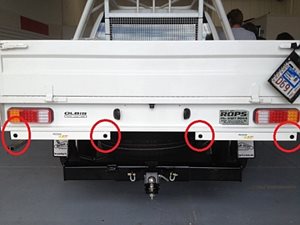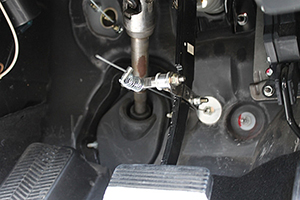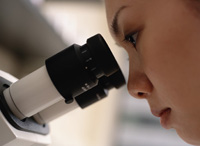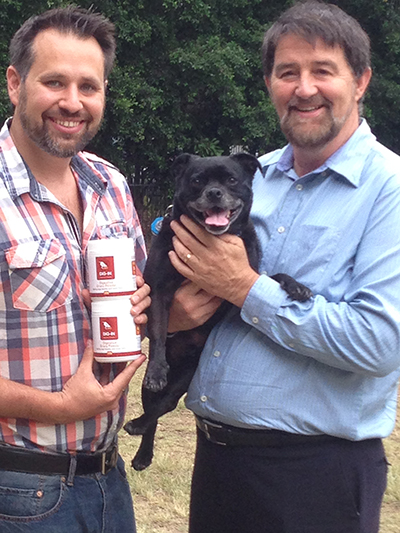EXTRA >> WHEN one of the world’s most renowned innovative organisations offers to tell you its secrets to success and greater sustainable profits, business leaders tend to sit up and listen.
When DuPont – a company that has been successfully innovating and creating new products like gunpowder, industrial explosives, Nylon, Teflon, Kevlar and Lycra, for more than two centuries – offers to tell you how to emulate what it has done to lift annual profits from $200 million a year to more than $1 billion and rising, people will pay for that advice. 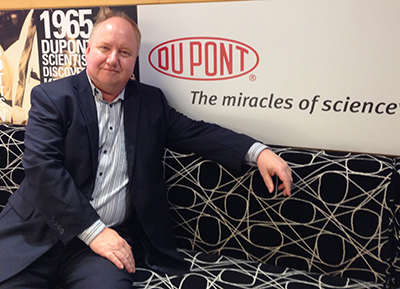
That is precisely the idea behind the establishment of DuPont Sustainable Solutions, headed up in Australia and New Zealand by Rodney Nelson and headquartered in Perth.
Mr Nelson gave an overview at the November Innovation Series Brisbane event on how the division has become another innovative DuPont success story, helping businesses of all kinds to transform their operations to build in a culture of innovation and drive long-term profit growth.
“DuPont Sustainable Solutions is the only DuPont unit that deploys our science as a service as opposed to a product,” Mr Nelson said. “We are helping mining clients, for instance, increase the life of their conveyor belts by using Kevlar. We are reducing carry back, that’s when material hangs up inside a coal train or a truck, by using an additive that we have from the food industry that helps bread and cake dislodge from their moulds during the manufacturing process.
“We are a very diverse company. We are a miner. We are a farmer. We are a chemical processor. We are a food business.
“We operate over 230 plants around the world in over 40 countries. There are 38,000 people. It is a very diverse company that has been going for (more than) 212 years.”
Things were going along fairly well for DuPont in 2004 when it became obvious that the organisation needed to innovate on a massive scale to fend off threats to its core businesses and snap itself out of a complacency that $200-$300 million a year profit was what it should be achieving. An assessment of the company’s capabilities indicated a much greater level of profitability should have been expected.
With innovation such a core aspect of the DuPont culture, it was prepared to completely rework its business models, developmental approaches and systems, if that’s what was required.
The transformation that ensued became known as the DuPont Production System (DPS) and this ever-evolving system is the basis for the service Mr Nelson’s division supplies today for other organisations.
“This is what it looked like for us in 2004,” Mr Nelson said. “We had a landscape internally that had a mix of different cultures through the acquisition (process), companies that had been with us for 100 years, that had a way of working, to companies that we had acquired in 2004 who had a different way, different cultures – no sense of ‘one DuPont’.
“Externally, we were facing competitors that had manufacturing costs and qualities that were better than ours. We had to do something.
“Yet, we were good. We had been doing continuous improvement for 25 years. We’d done TQM (total quality management), we’d done Lean, we’d done Kaizen, we’d done Six Sigma, we’d done cultural transformation. I could think of 100 consulting things that we’d done. Somewhere in there we had even done Quality Circles,” Mr Nelson said.
“And we were doing okay. We were pulling $200-$300 million a year out of the business through these continuous improvement projects.
“But, all those differences around our manufacturing and around the way we worked had caused variability and inconsistency. So we were leaving what we estimated was around $1 billion a year on the table.
“This was where the DuPont Production System was born. It started in 2006 and is deployed now at all sites across the world.”
How that played out can be illustrated by a question Mr Nelson asked a DuPont colleague when he joined the company last year, coming to the business from his previous role as KPMG’s Global Mining lead of projects.
“A 27 percent increase in free cash and a forecasting accuracy that went from 30 percent to 70 percent,” Mr Nelson said. “That was the reaction of one of my colleagues in our food business when I asked, what has our operational excellence program delivered for you?
“I’d call that a reasonably positive outcome.”
Mr Nelson said he learned a huge amount about the transformation from his colleague and others in that particular business – everyone he spoke with was an advocate for the ‘new’ business and conversations with them were frank and honest about the discipline, rigour and process the system imposed.
Mr Nelson learned that this engagement of staff was a natural part of DPS.
HOW IT WORKED IN PARRAMATTA
“I joined DuPont in September 2014 and in my first two weeks I visited one of the DuPont manufacturing plants in Australia,” Mr Nelson said. “It’s in Parramatta and has been in DuPont for 60 years.
“It’s a small plant, about 50 people, and it makes herbicides. I’ve been in the industry for about 30 years and have seen a lot of plants. This was the most impressive one I had ever seen.
“You could eat off the floor, there were visual management boards up that were up to date and were being used. It was a temple of 5S – so everything was labelled – everything. Everything in its spot.
“I was expecting old lengths of conduit hanging off walls and patches over holes in walls where equipment had been … nothing … that plant looked like it was two years old.
“The most impressive thing was the people … talking about improvements in time frames of years. Most companies look at improvement as short term, got to get it in, 10 percent return on investment. This was a whole business from PhDs in chemistry to operators and maintainers who were thinking in years.”
Mr Nelson said in 2006 this plant had been facing a major challenge. About 90 percent of its product was used in the domestic market and it was under threat from cheaper imports. To survive they had to become part of the DuPont global supply chain. To do that, they had to change their cost base, radically.
“We had no money – manufacturing plants do not have a huge amount of capital, so DPS was their only solution,” Mr Nelson said.
“Today they are the second lowest cost producer of their product in the DuPont supply chain and the only plant that makes it better is in the US – and it produces 10 times the volume. They are cheaper than plants in Indonesia, cheaper than plants in China. They now export 95 percent of their product.
“When we talk about the decline of manufacturing in Australia, here is an example of a company that has done it and an example of how we can compete.”
ALL SIZES FIT ONE
The role DPS plays in DuPont’s future changed as its value became apparent. DPS could be applied to external organisations as a service – becoming an innovative new arm of the business. Like DuPont has consistently done throughout its history, the company could apply and sell its unique new product. DuPont Sustainable Solutions was born.
“DuPont is a science company,” Mr Nelson said. “In fact, every second person I have met here so far has a PhD in chemistry.
“We work together collaboratively with partners to solve some of the biggest challenges we are facing in the world. We do that through three world-class interlocking competencies.
“Food : we do seed development and research. Crop protection. We do additives, enzymes. I am told a third of the yoghurt in the world is manufactured using DuPont cultures.
Energy: not only bio-diesel. We do replacements for fossil fuels. We also look at our technologies and technology deployed to companies to reduce their footprint in a world that is increasingly recognising that we have a finite resource base.
Protection: probably the best known of the DuPont products. This is where Kevlar, Teflon, Lycra and light materials for cars, for instance, comes from.
“Underpinning this are 12 business units of which I have the privilege of leading one in Australia.”
Mr Nelson described DuPont as “a portfolio company”.
“We take our science and we turn it in to high value products which, at their inception, are new and therefore attract good margins. As the life cycle of that product matures and competitors come in and there are new products, it goes towards a low cost high volume business. We divest. We invented nylon. We no longer make it.
“For our first 100 years, we only made gunpowder and explosives. We now make none.
Our company changed. We actually owned Konica at one point in our life – for about 12 years. We also acquire businesses that need the (DuPont) strategy as we go forward.”
DPS USES ITS ‘PULL’
DPS is actually four components put together, Mr Nelson said, consisting of the process, the tools used, the capacity and the mind-set or behaviour of the people.
“One is around process – looking at the core processes that add value to the business,” Mr Nelson said. “We do not use this on back office, so support processes are not part of it – finance, HR, payroll – they should be, but they aren’t. So we look at the parts that add value to the product.
“We kept all our tools. We did not throw out Kaizen and Six Sigma … we put them all together so we produced a tool box.
“We look at the capacity, the capability and the roles and the people skills in the plant – and, most importantly, we drive it through mind-set behaviour.”
This approach largely came about by turning the traditional way of establishing a product on its head. DuPont changed from its traditional push of capability to create a product into ‘pulling’ capabilities to achieve a product required by the market.
“You build things, then you look for capacity, then you build capability – so you train people, you coach them and so on – then you get what I call results, little tests and projects to see how you are going,” Mr Nelson said, describing the traditional business approach. “Eventually, you get to outcomes. We put in a lot of money and resources at the early stages for very little outcome. As we go up we gradually get there … (but) most people don’t.
“What you don’t hear from many consultants … only one in six Six Sigma projects that we ran actually delivered a sustainable ongoing benefit …
“This was pushing capability on to people. (DuPont thought) why don’t we get it to do the reverse?” he explained.
“An operator runs a piece of plant and it runs at 104 percent of the previous shift. The operator asks how did that happen? What do they have to do to make it run at 104 percent tomorrow? How do I design an experiment or data to understand what I need to do to make it better?
“What we did was turn the (traditional) pain curve into a gain curve … we turned it around.
Instead of pushing, we pulled.”
Mr Nelson described the process as “making people believe”.
“That’s what DPS starts with – it starts by making people believe. So our whole idea behind DPS is to turn it in to pulling the capability, not pushing it out.”
Mr Nelson said, in hindsight, it was easy to see why this approach proved immediately more successful.
“I have deployed Lean Six Sigma programs across multiple organisations. It starts with lots of executive sponsorship and fanfare and people saying this is going to be fantastic – 90 percent of the people who turn up at training don’t know why they are there, have no idea how this fits in to their role and don’t know what they are going to do with it. That’s why those sorts of programs have failed, in our experience. So we turned it around – we made people believe.
“Our experience is that people drive the operational excellence,” Mr Nelson said. “Yes, they need the tools. Yes they need the processes, but it’s people.
“We can design the best system you like. If we don’t actually implement it well, it’s worthless.”
Mr Nelson said DuPont developed DPS around 13 foundation principles, grouped around factors such as process capabilities and individual capabilities.
“Some of them are around process abilities,” he said. “So, what do I need to do to improve a process?
“Then there is a set around individuals. So how do I affect myself and another? What techniques and tools do I need to make somebody change and believe?
“Then there are the tools I need for an organisation. How do I lead the change across a business? How do I build capability across a unit, not just in individuals?”
One area of particular interest in the system for Mr Nelson is what the DPS calls ‘leader standard work’.
Without realising it, more than 30 years ago Mr Nelson saw a dramatic example of the dangers of not having good leader standards in the workplace, while working at Ampol’s Lytton refinery in Brisbane.
“I remember one of the engineers came into the engineering maintenance room and one of the operators said to him, are you lost? It has stuck with me to this day that I would never want to be in a position where I (as a leader) was seen as not being part of the business,” Mr Nelson said.
“I did not realise it at the time but we call that ‘felt leadership’ … it is about being present, it is about being visible.”
Mr Nelson said while DuPont was better known for its safety than for its productivity, much of these behaviours equally translate. He gave the example of a plant he observed in Western Australia, whose leadership was not happy with its safety performance. The plant leader asked every one of his supervisors to paint their hard hats blue.
“So people would see the supervisors in the field and, more importantly, so would he,” Mr Nelson said. “People would start seeing leadership visible.
“That is part of what we call leader standard work.”
LEADERSHIP COMPETENCIES
Mr Nelson said so much of the success found in DPS derives from developing leadership competencies – and this was applicable across all organisations.
“It is actually a set of competencies, not management competencies but leadership competencies, that are designed to help employees start believing,” Mr Nelson said.
“From scepticism to actually believing they are empowered, they are engaged to make exactly what I said happen … how to I make this thing go at 104 percent every day?
“These are fundamentally what we call management skills … but they are actually leadership skills, coaching skills.
“How do I have a performance dialogue with somebody that is both good and constructive? Think of your own workforces. Think of what you have actually done to help empower them. I certainly did, and in my career I had not seen anything like this structure in anything I’d worked in.”
The DPS process itself begins as a three-day course then is followed by about two months of on-the-job coaching. Trainees are all issued with small books that they carry with them and utilise in the workplace. DPS usually takes about six to nine months to implement across a business, as demonstrated from DuPont’s roll-out across more than 200 of its own businesses.
“We had some failures in the beginning, until we could get it right. Or, actually learning from this has been how we have been able to repeat it 238 times,” Mr Nelson said.
“One of the key learnings is we take people from the previous site and put them in to the next site. So the team does not get burnt out. After three sites, the team is always new, if that makes sense. So we are constantly rotating the team and getting those new learnings and keeping it fresh for everybody.”
Perhaps the most interesting part of the DPS process is how it is completed.
“The interesting part of the methodology is how we go out,” Mr Nelson said. “Most people know how to start a project … you have a kick-off, you hang a chart up. But how do you end?
“Endings are very messy. People just slip out the door? Or they weren’t there? Or they were thrown out, which is the case on most big capital works.
“We actually wrote a set of exit criteria based around people. And it’s about observed competencies. Radical! First time I’ve ever seen it.
“This sort of thinking is not (usually) embedded into business projects. A business project needs exit criteria.”
Mr Nelson said fundamentally the project was regarded as ‘completed’ – even though the effects are ongoing and the innovation continues – when staff are taking ownership of their own transformation.
DuPont Sustainable Solutions simply shows this in action to demonstrate DPS to potential clients.
“We take clients on trips to our facilities, as a kick-start to believing that you can actually have this in practice,” Mr Nelson said. As an example, an operator at DuPont’s Parramatta plant was happy to enthusiastically explain to visitors, off the cuff, about his own transformation during a recent site visit – and this was probably the strongest recommendation that could be made.
“It’s a quite empowering culture,” Mr Nelson said. “That’s a site that has probably had DPS in for three years.
“DPS is about moving people down that maturity curve into that space ‘because I want to do it’.
“But we didn’t do DPS because we wanted to have an empowered culture. We did DPS because we needed money. That is crystal clear when we do this. We are doing this to make money.
“We are now pulling over $1billion a year out of our business. It has solely come from this initiative. It is impressive.
“Year on year,” he said. “Not fading. In fact, getting better.”
www.sustainablesolutions.dupont.com
www.innovationseries.com.au
ends
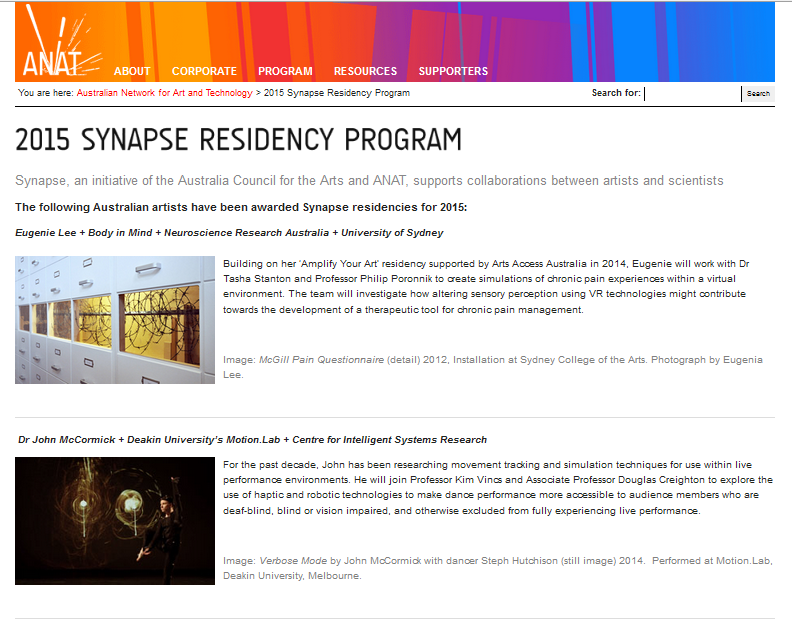

 How to resolve AdBlock issue?
How to resolve AdBlock issue? 
